
Hierarchical LAN Design Model
the hierarchical network design, which improves performance, simplifies design, increases scalability, and reduces troubleshooting time.
- A hierarchical LAN design model divides the enterprise network architecture into modular layers.
- Modular layers allow each layer to implement specific functions.
- Modular layers can be replicated throughout the network providing scaling and a consistent deployment method.
- Provides fault containment.
- Provides the ability to put network components in place or take them out of service with no impact on the rest of the network.
Layer Design
- Access layer – Gives endpoints and users direct access to the network.
- Distribution layer – Provides an aggregation point for the access layer and acts as a services and control boundary between the access layer and the core layer.
- Core layer (also referred to as the backbone) – Provides connections between distribution layers for large environments.
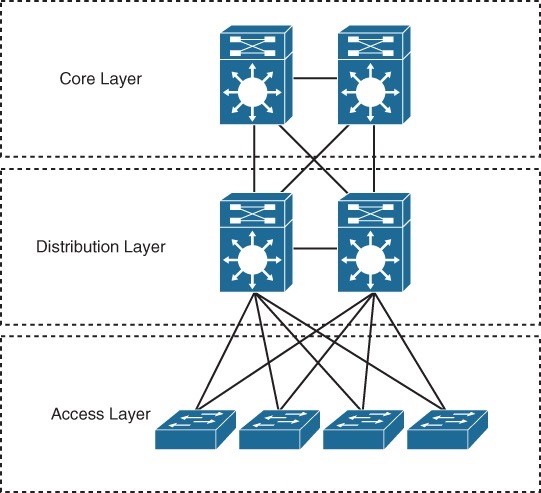
Figure 22-1 Hierarchical LAN Design
Scalable Layer Design
The number of layers needed depends on the characteristics of the network deployment site. A small campus in a single building might require only access and distribution layers, while a campus that spans multiple buildings will most likely require all three layers. The modularity of this design ensures that each layer will provide the same services and the same design methods.
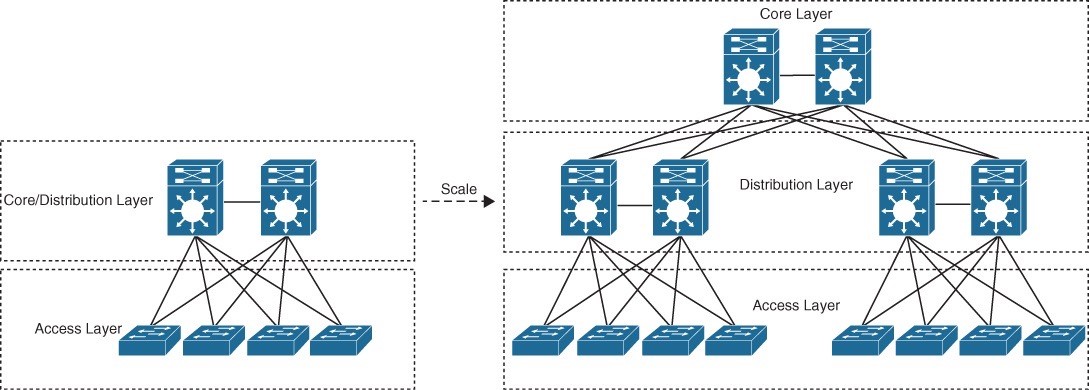
Access Layer
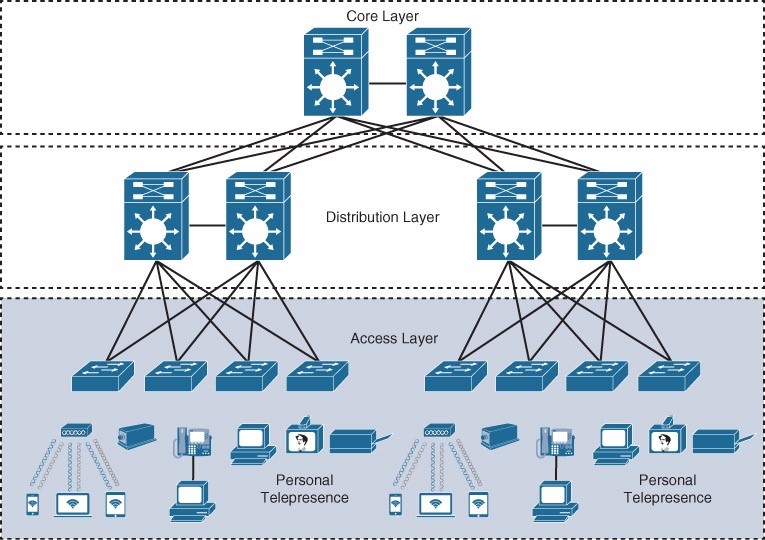
Figure 22-3 Access Layer Connectivity
The access layer, also commonly referred as the network edge, is where enduser devices or endpoints connect to the network. It provides high-bandwidth device connectivity using wired and wireless access technologies such as Gigabit Ethernet and 802.11n and 802.11ac wireless.
Access Layer
- It can be segmented (for example, by using VLANs) so that different devices can be placed into different logical networks for performance, management, and security reasons.
- In the hierarchical LAN design, the access layer switches are not interconnected to each other. Communication between endpoints on different access layer switches occurs through the distribution layer.
- It plays a big role in ensuring that the network is protected from malicious attacks. This protection includes making sure the end users and endpoints connecting to the network are prevented from accessing services for which they are not authorized.
- QoS trust boundary and QoS mechanisms are typically enabled on this layer to ensure that QoS is provided end-to-end to satisfy the end user’s quality of experience (QoE).
Distribution Layer
- The primary function of the distribution layer is to aggregate access layer switches in a given building or campus.
- The distribution layer provides a boundary between the Layer 2 domain of the access layer and the core’s Layer 3 domain.
- This boundary provides two key functions for the LAN:
- On the L2 side, the distribution layer creates a boundary for STP, limiting propagation of L2 faults.
- On the L3 side, the distribution layer provides a logical point to summarize IP routing information when it enters the core of the network.
- The summarization reduces IP routing tables for easier troubleshooting and reduces protocol overhead for faster recovery from failures.
- The distribution switches need to be deployed in pairs for redundancy.
- The distribution layer switch pairs should be interconnected to each other using either a L2 or L3 link.
- When campus buildings are geographically dispersed, distribution layer switches can be located within the buildings in order to reduce the number of fiber-optic runs (which are costly) between buildings.
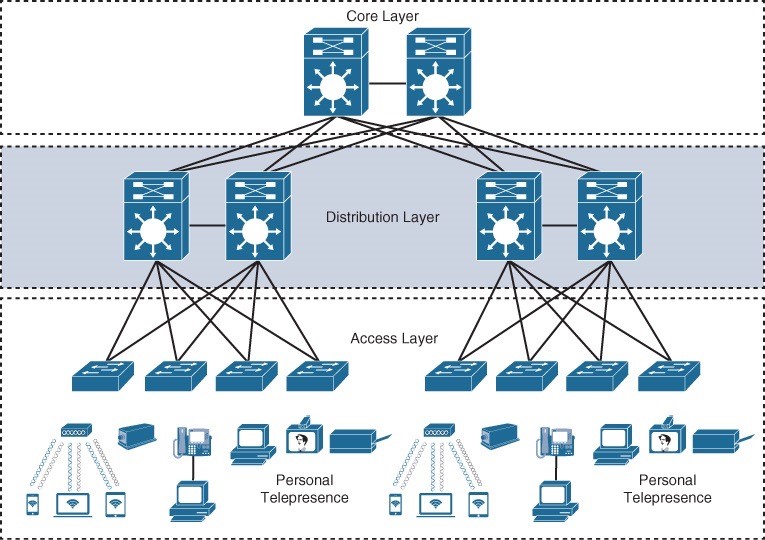
Figure 22-4 Distribution Layer Connectivity
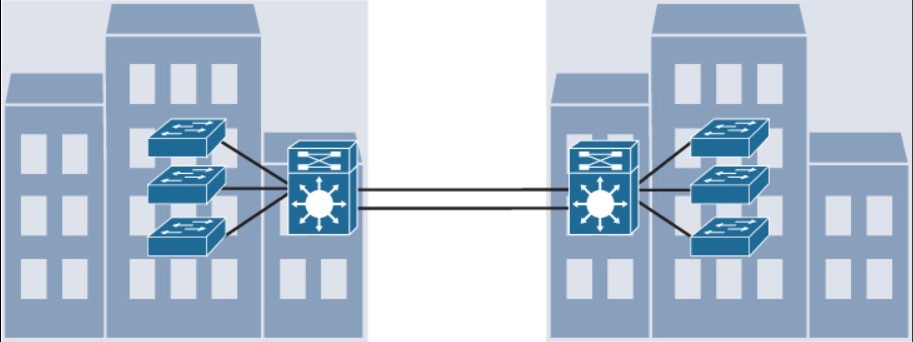
Figure 22-5 Distribution Layer Reducing Fiber Optic Runs
Core Layer
- As networks grow beyond three distribution layers in a single location, organizations should consider using a core layer to optimize the design.
- The core layer is the backbone and aggregation point for multiple networks and provides scalability, high availability, and fast convergence to the network.
- The core can provide high-speed connectivity for large enterprises with multiple campus networks distributed worldwide, and it can also provide interconnectivity between the end-user/endpoint campus access layer and other network blocks, such as the data center, the private cloud, the public cloud, the WAN, the internet edge, and network services.
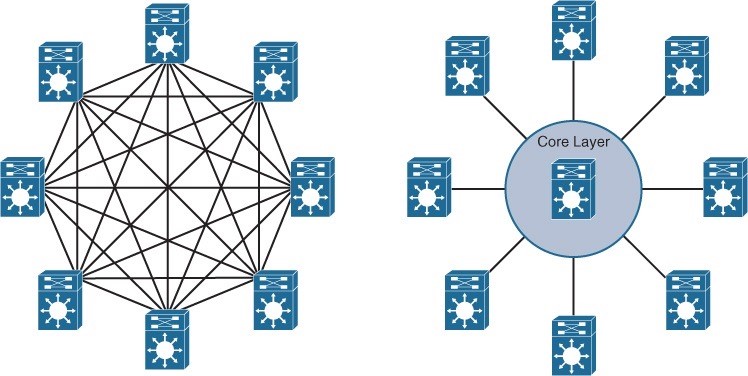
Figure 22-6 Core Layer Reduces Large Network Complexity Use of the core to reduce the network complexity, from N × (N − 1) to N links for N distribution layer switches.